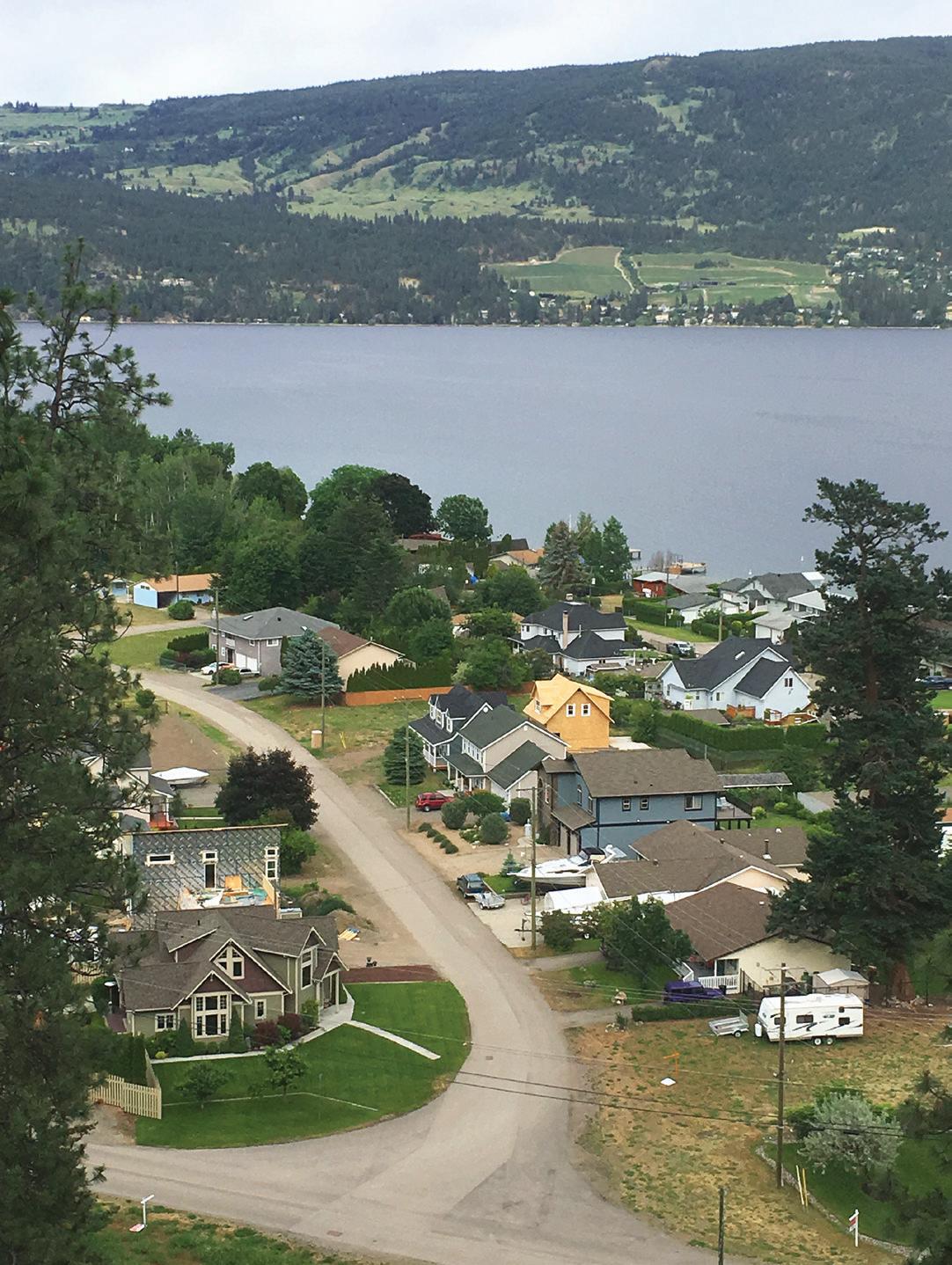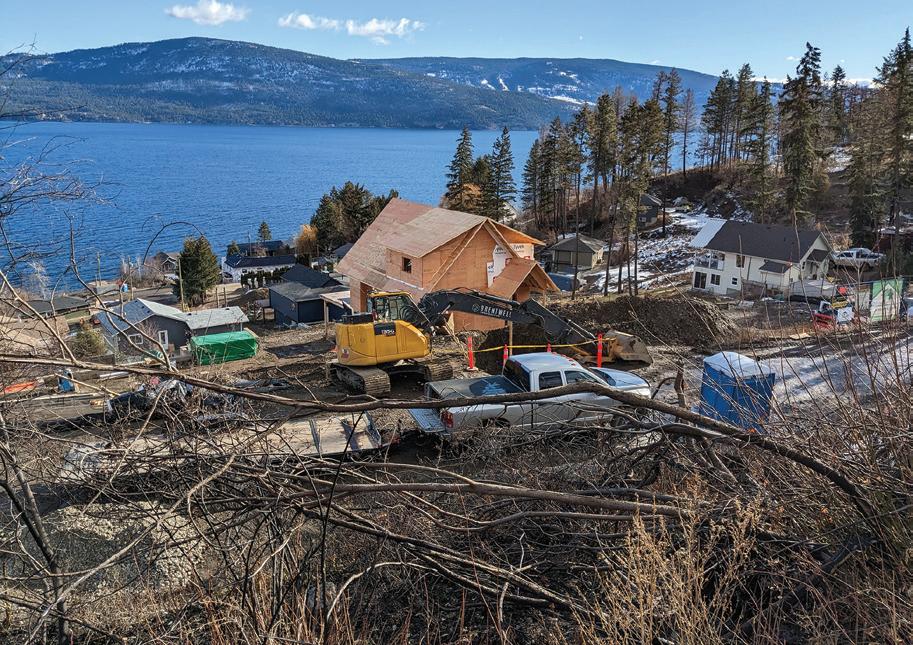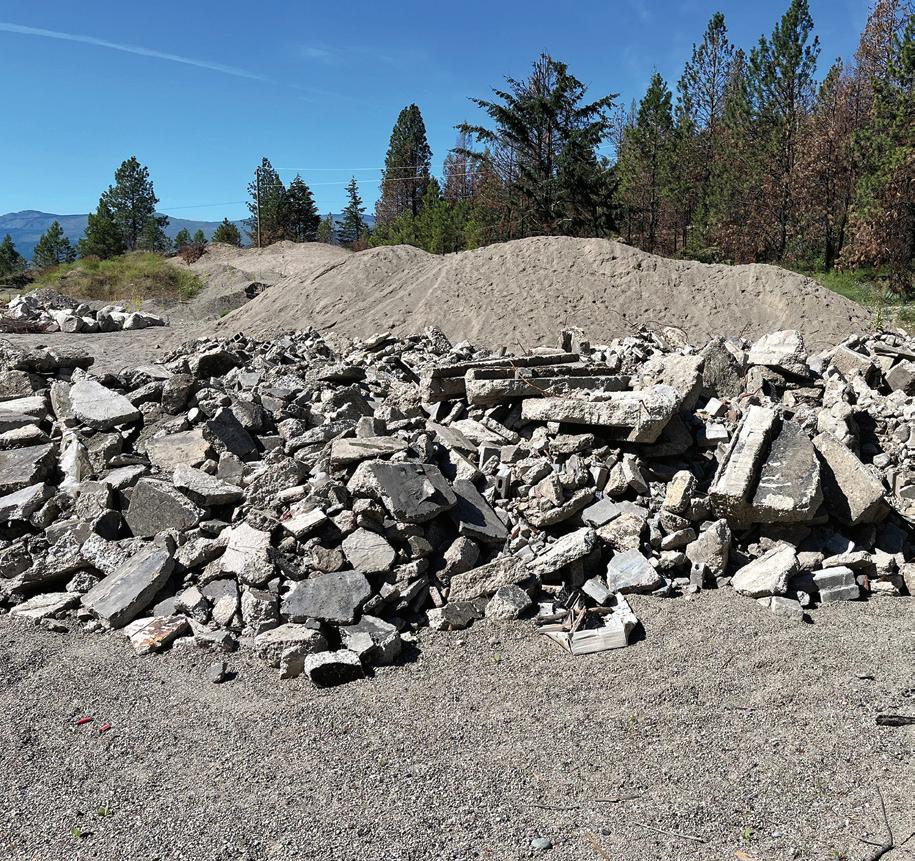
4 minute read
Reduce poverty, increase wellness
A path toward a poverty-free Central Okanagan has been laid out with completion of the Central Okanagan Poverty and Wellness Strategy. It was developed over several years through a collaborative community driven initiative involving citizens, community organizations, leaders and all local governments. It builds on the shared understanding of how poverty is affecting the wellness of residents.
Guided by principles of reconciliation, equity, and inclusion, the project’s extensive public engagement, outreach and involvement opportunities listened to the voices of those with lived and living experience through poverty.
Poverty impacts some people more than others. During research for this project, it was found that some groups are more likely to experience poverty. High risk groups are:
• Seniors and Elders
• Families with children
• Youth who have been in the foster care system
• Immigrants and newcomers
• Unattached (single) individuals
The strategy offers a clear vision for success - a community where every person and family feel secure in meeting their basic needs (housing, food, clothing, transportation, mental health, wellness), is resilient to challenges and setbacks, and feel a sense of meaningful inclusion. As people move from surviving to thriving, they can explore themselves and their community in new ways.
By acting together, the strategy aims to provide everyone in the Central Okanagan with a real and fair chance to succeed through improved policies, practices, and resources creating an environment that helps to reduce poverty in the Central Okanagan.
Everyone has a role to play: Service providers, local government, business, ministries and health authorities and First Nations and Indigenous communities. This Collective Impact can help everyone understand how small actions contribute to system changes.
The strategy offers short-, medium- and longerterm actions and big ideas to encourage and sustain community action, collaboration and initiatives to make a difference in the lives of all Central Okanagan residents.
A $149,000 grant from the Union of BC Municipalities Poverty Reduction Planning and Action Program helped to fund this important effort. The final report and strategy can be viewed at yoursay.rdco.com.
$149K grant from the Union of BC Municipalities Poverty Reduction Planning and Action Program
Collaborating on housing
During the extensive consultation process as the Regional Housing Strategy was developed, participants generally suggested a shared opportunity and vision – “the RDCO will provide bold leadership in addressing affordable housing challenges through a coordinated regional response to the housing crisis.”
This has been one of the core elements of the Regional Board over the past few years as one of its priorities is Initiating and supporting efforts to create a healthy built environment that offers a diverse range of housing options.
As the region is one of the fastest growing in the province and country, the housing strategy provides an opportunity for a shared commitment and offers an overarching guide to local and First Nations governments for an effective, efficient coordinated approach, while at the same time identifying appropriate actions to support a vibrant and resilient region.
By focussing together on the wide range of housing issues, the Strategy provides guidance and direction on how to move forward and address the challenges around housing affordability, supply, and improving regional coordination.
This Regional Housing Strategy offers recommendations and corresponding action items to achieve the five objectives set out in the Regional Growth Strategy. Those objectives include:
• Strengthening coordination between local governments
• Coordinate a regional housing advocacy strategy with senior governments for additional Central Okanagan resources and supports
• Strengthen information sharing and partnership mechanisms with local and First Nations governments and non-profit housing providers
• Develop best practices to regulate and protect rental housing stock and facilitate the development of affordable housing
• Assess policy and development processes to build staff capacity, identify policy coordination opportunities and streamline approvals with senior government
The strategy also outlines monitoring and reporting mechanisms for keeping track of actions and implementation. The final strategy can be viewed at yoursay.rdco.com.
261 building permits worth $72M
Recovery and rebuilding transition
Regional District staff and partners continue to support residents that were impacted by the White Rock Lake wildfire as they move through their stages of recovery to rebuilding.

By mid-2022, the Regional District Recovery and Resiliency office wound down its active support, transitioning to expedited service for residents through the Community Services building and planning services team and Engineering Services staff, depending on their specific needs.
The RDCO Recovery team connected with individuals and families in need with financial aid, mental health and wellness supports, insurance advocacy, managing donations and interim housing resources. All the objectives identified in the Community Recovery Plan were completed including establishing and continuing long-term programs and service support through Emergency Management BC (EMBC) and directly one-on-one with residents by the Canadian Red Cross.
In total, 47 residents participated in developing capacity needs assessments, tailored to their specific situation. 62% of them lost their primary residence, 38% a secondary residence and 32% had no or insufficient insurance.
A debris management program through EMBC and the Red Cross was highly successful for affected properties in the Estamont and Killiney Beach areas. As of December 31, 11 applications for debris reimbursement had been approved and the Regional District processed a total payout of $163,556. In all, 178 tons of contaminated soil, 548 tons of concrete and 230 hazard trees were removed from properties. Much of the concrete was recycled at a North Westside collection site. It was crushed and reused to assist with expanding the North Westside waste transfer station.
By year end, 46 applications had been approved for demolition permits and 35 completed this as they continued into the rebuilding phase. 34 of 36 building permit applications had been approved and these residents were able to begin construction, taking another step towards rebuilding.
Initiatives continue to directly support the communities impacted by the devastating wildfire. These include temporary increases in staffing levels to ensure timely building inspections and permitting, waiving of some associated development fees, extending permit timelines to allow for temporary RV accommodation on properties and where possible, pursuing financial assistance to reduce the costs of rebuilding. As the needs of impacted communities transition, the Regional District will continue adapting its support services.
548 Tons Of Concrete Removed From Properties And Recycled










